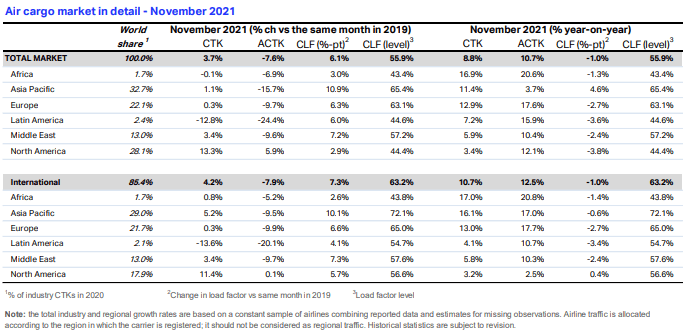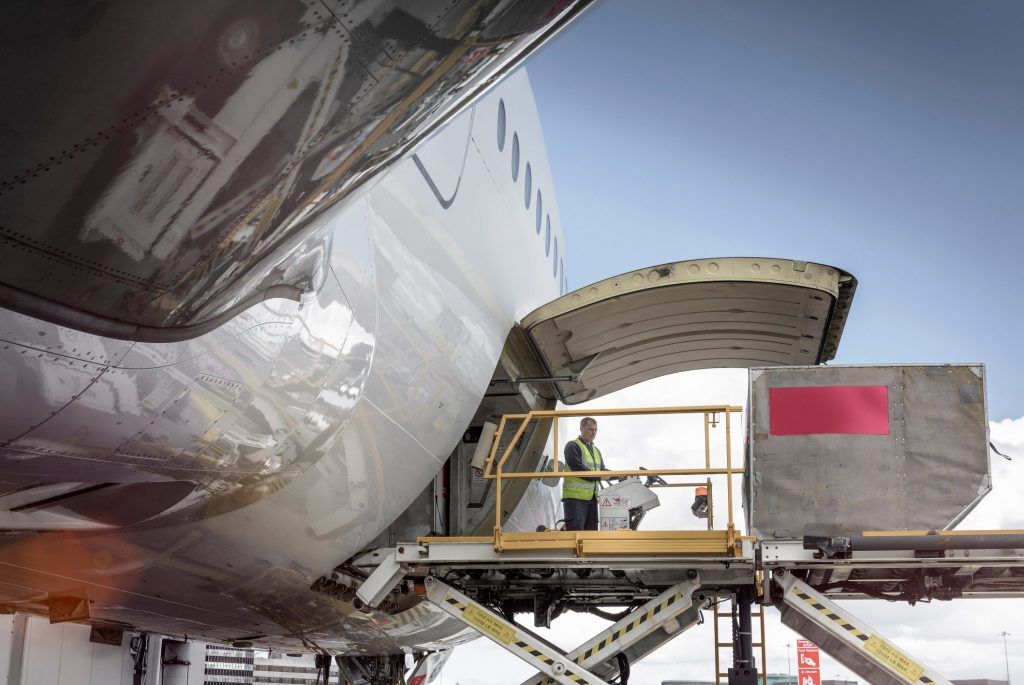November 2021 was a relatively mild month for air cargo, with industry-wide freight tonne-kilometres (CTKs) growing 3.7% compared to the same month in 2019, reported the International Association of Air Transport (IATA).
This is lower than October’s 8.2% result on the same basis and the lowest rate since January 2021.
For IATA, the deterioration is somewhat unexpected, as there are signs that demand remains strong during the peak cargo season.
Most of the slowdown in volumes shipped in November can be explained by supply chain issues.

After removing seasonal patterns from the data, CTKs fell 1.3% month-on-month in November 2021, leaving the actual level slightly above the pre-crisis peak of August 2018.
All major regions that IATA tracks saw slower air cargo growth in November compared to 2019.
Asia Pacific was relatively resilient, with seasonally adjusted (SA) CTK totals rising 0.4% m/m, the only region with an increase in this metric.
Air cargo
Meanwhile, November saw significant difficulties moving cargo at several key airports, including New York’s JFK, Los Angeles and Amsterdam.
This was caused by labor shortages, in part related to quarantined workers, insufficient storage space at airports, and a large backlog of shipments to process.
While it is difficult to quantify the impact this had on air cargo volumes carried, congestion is likely to have intensified in November amid the rush to deliver goods for key consumer events later in the year.
Lack of cargo capacity on some key trade routes, such as within Asia, further prevented full demand from being met.
While there is capacity globally, sometimes it’s not available in the right place.
This is reflected in the exceptionally low levels of PMIs for supplier lead times.
Globally, the PMI was at a record low of 34.7 in October.
It rose to 36.4 in November; still well below the 50 mark, indicating worsening conditions (more negative responses in the PMI survey than positive).
While longer lead times often provide incentives for companies to use air freight to benefit from its speed, under current conditions they point more directly to longer lead times due to supply bottlenecks.
![]()

